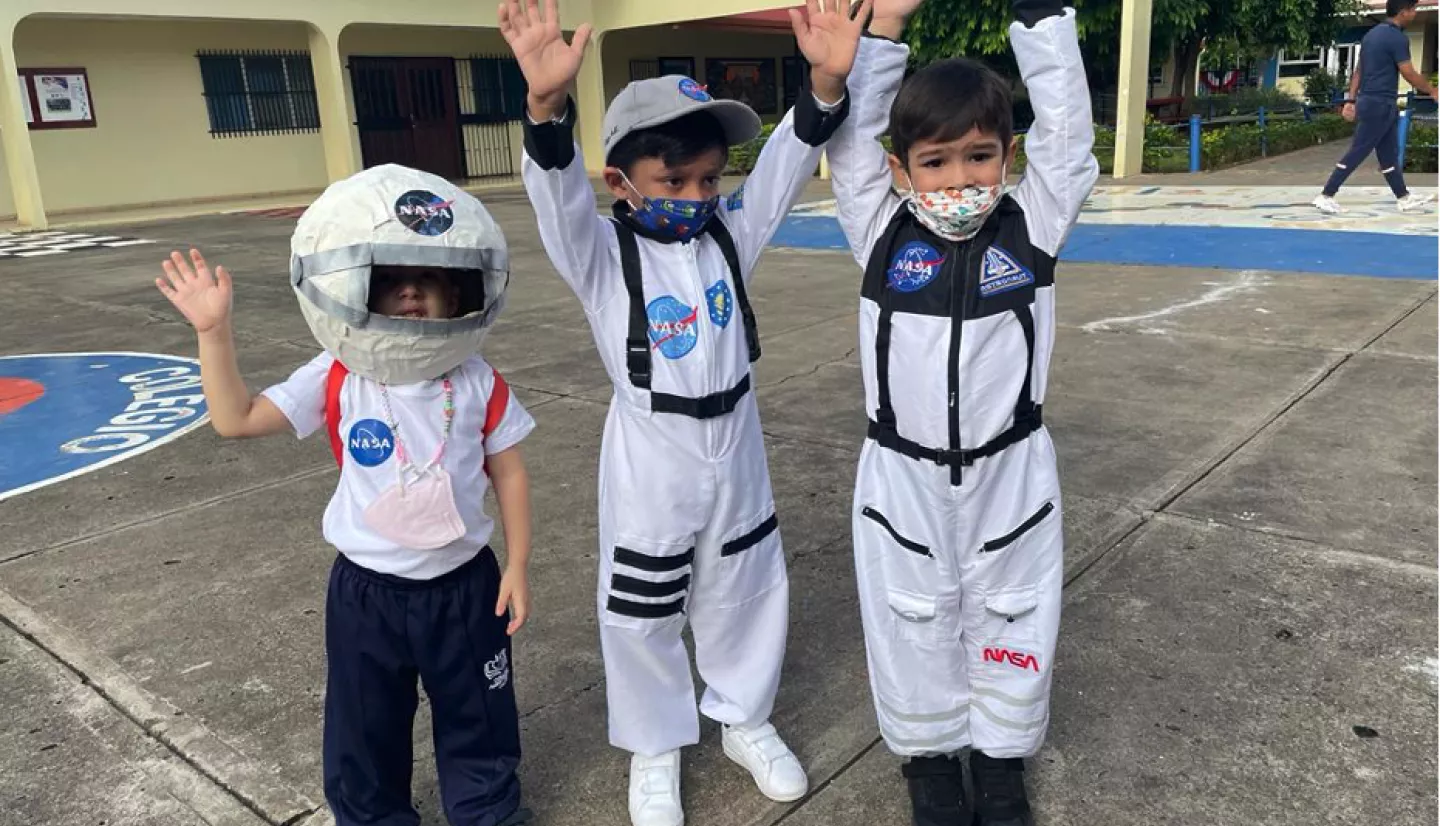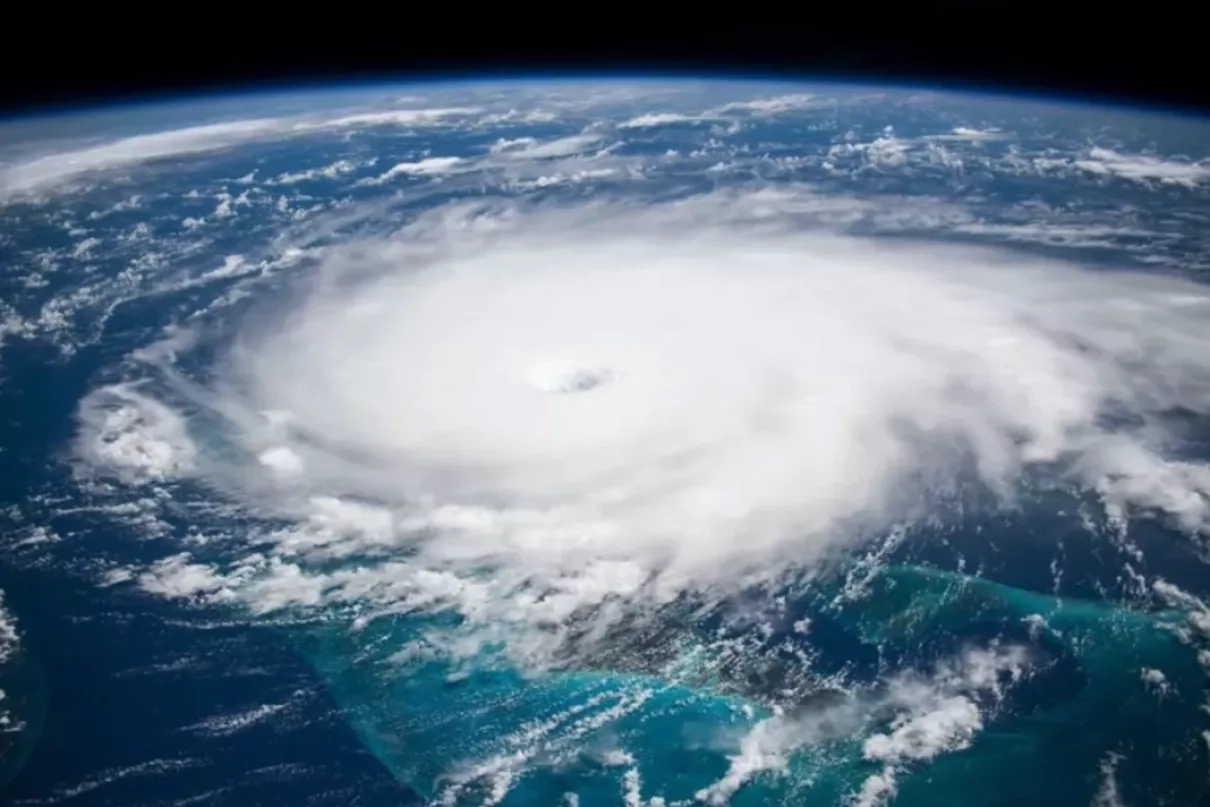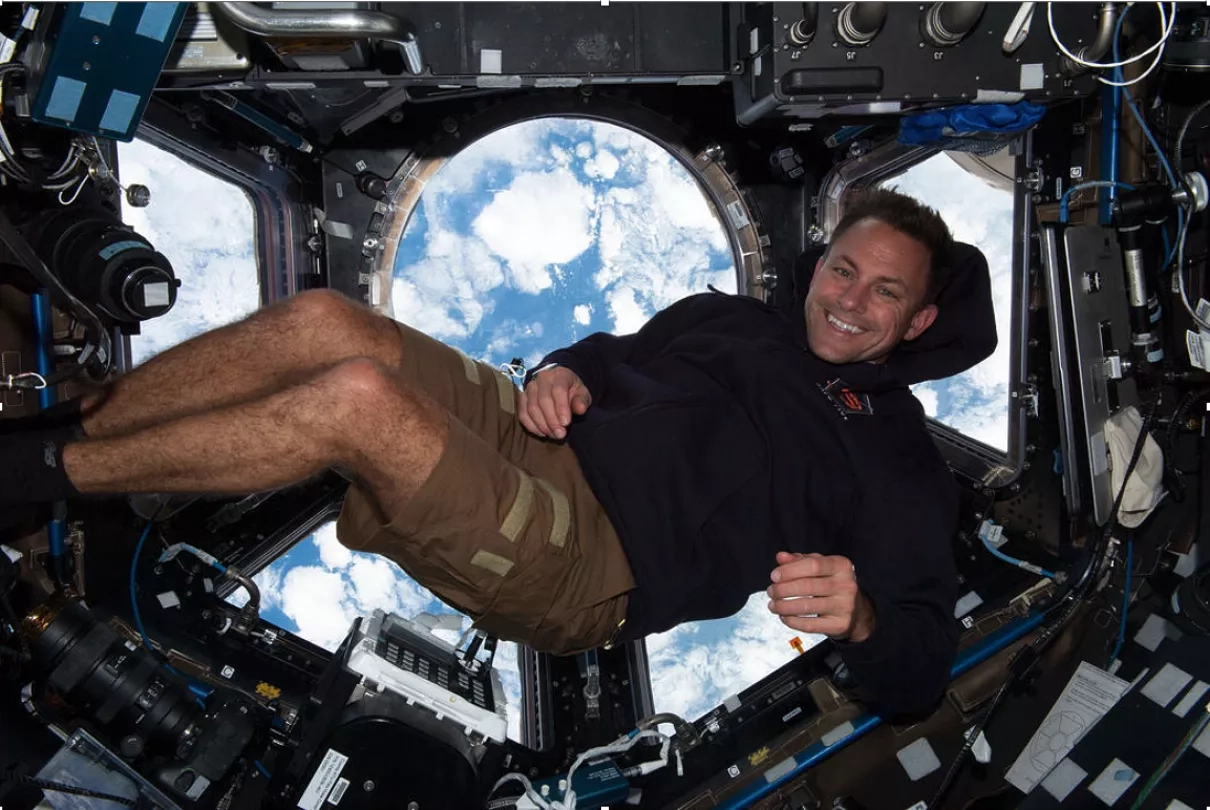A brief burst of static punctuates the airwaves, clearing as an amateur radio operator at a ground station in northern Italy verifies a signal “Do you copy, Joshua…? Over.”
“Welcome aboard the International Space Station!” exclaims Expedition 68 flight engineer Josh Cassada, from the orbiting laboratory, 250 miles above the Atlantic Ocean. “I have you loud and clear, and I’m ready for questions. Over!”
For weeks, young students from 63 schools in 12 countries throughout the Caribbean and Central America had been eagerly anticipating this moment – a chance to have a real-time live conversation about what it’s like to see Earth from space with an astronaut who was doing just that. As the Amateur Radio on the International Space Station (ARISS) HamTV Telebridge ground station established contact, representatives of NASA’s Disasters program and other organizations talked with the children about their shared roles in understanding and preventing disasters.
The live event last November was part of a collaborative awareness initiative, Disaster Fighters, made possible through support by organizations around the globe, including NASA’s Earth Applied Sciences Disasters program, the Global Facility for Disaster Reduction and Recovery (managed by the World Bank), the UNDRR Regional Office for the Americas and the Caribbean, the Caribbean Disaster Emergency Management Agency (CDEMA), and the Coordination Centre for Disaster Prevention in Central America and the Dominican Republic (CEPREDENAC). Each agency has a goal to improve disaster preparedness and build resilience.
In preparation for the connection with the orbiting laboratory, each school held activities for their kids to discover more about NASA and how platforms in space monitor phenomena like tsunamis, earthquakes and other natural hazards. The conversations moved from the classroom to the dinner table as the students' excitement spread to their parents and other people in their communities. As the live chat was transmitted simultaneously in English and Spanish, those families followed along on social media.
The students had prepared over 400 questions for the astronaut leading up to the event, but due to the space station's "line of sight" with ground stations, communication windows for amateur HamTV sessions are brief. Cassada had only about 10 minutes to tackle the student's top 12 questions.
It turns out that 10 minutes is more than enough to make a lasting impression.
As his spacecraft orbited Earth at more than 17,000 miles per hour, Cassada also covered extensive ground. He answered questions from the young students about the orbiting laboratory, talked about how astronauts photograph phenomena like hurricanes and volcanoes through a domed window on the station, and explained how sensors mounted outside the orbiting laboratory are helping scientists understand the impacts of climate change. When asked about his career, Cassada said, “The best thing about this job is there’s always something new to learn – whether it is learning how to live and work in space, and get better at that – or if it’s helping our researchers do their experiments and learn new things about the fundamental science that they’re doing.”
NASA shared highlights of the special event on YouTube in March, expanding awareness to thousands of other people around the globe of how Earth observations from space play a valuable role in helping communities worldwide understand the impacts of disasters and climate change.
Emiliano Rodriguez Nuesch of Pacifico Communications, which produced the event for Disaster Fighters, tweeted when NASA released the highlight video, “The kids are still sharing stories of this conversation. It was so inspiring for all of us.”
Cassada joined in celebrating the connection with his social media followers, “Having the opportunity to talk to students across the planet via ham radio while aboard the @Space_Station has been a huge highlight of my time in space. Their enthusiasm, riding those long electromagnetic waves, was completely contagious.”
Ultimately, it's clear that the event wasn’t just a chance for Caribbean and Central American youth to connect with an astronaut living in space. It was a way to connect their curiosity with NASA Earth Science's role in creating a more resilient future for the communities where they live.






